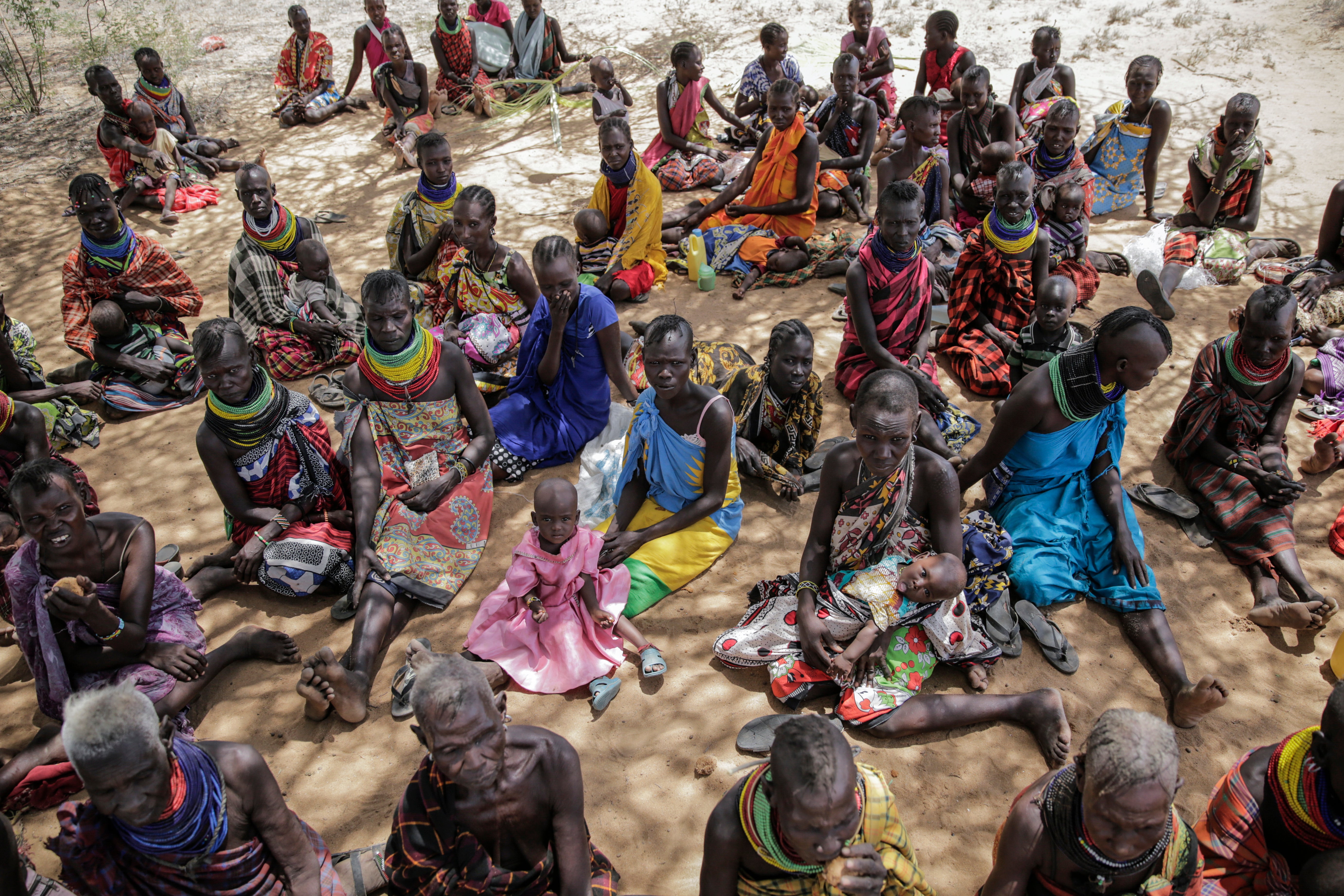East Africa bloc says 50 million face acute food insecurity
More than 50 million people in the wider East African region are expected to face acute food insecurity this year, a regional bloc said Friday, warning that some 300,000 in Somalia and South Sudan are projected to be under full-blown famine conditions

Your support helps us to tell the story
From reproductive rights to climate change to Big Tech, The Independent is on the ground when the story is developing. Whether it's investigating the financials of Elon Musk's pro-Trump PAC or producing our latest documentary, 'The A Word', which shines a light on the American women fighting for reproductive rights, we know how important it is to parse out the facts from the messaging.
At such a critical moment in US history, we need reporters on the ground. Your donation allows us to keep sending journalists to speak to both sides of the story.
The Independent is trusted by Americans across the entire political spectrum. And unlike many other quality news outlets, we choose not to lock Americans out of our reporting and analysis with paywalls. We believe quality journalism should be available to everyone, paid for by those who can afford it.
Your support makes all the difference.More than 50 million people across the East African region are expected to face acute food insecurity this year, a regional bloc said Friday, warning that some 300,000 in Somalia and South Sudan are projected to be under full-blown famine conditions.
The assessment by Intergovernmental Authority on Development, or IGAD, is one of the most dire yet as United Nations agencies, humanitarian groups and others continue to raise alarm over the region's food crisis that many say has been largely neglected as the international community focuses on the war in Ukraine.
That assessment applies to seven member states of IGAD, from Djibouti to Uganda.
Samantha Power, the administrator of the United States Agency for International Development, is traveling in East Africa to spotlight the hunger crisis in the region.
In Kenya's capital Nairobi on Friday, Power announced at least $255 million in drought-related humanitarian and development support to Kenya. She is expected to visit Ethiopia and Somalia, where some communities have suffered four consecutive failed rainy seasons.
Power earlier in the week spoke of the need to prevent the global food crisis from becoming a catastrophe, announcing $1.2 billion in funding that includes immediate food assistance for people in Ethiopia, Somalia and Kenya.
In addition to immediate humanitarian aid, the international community must sustain investment in global agriculture and undertake concerted diplomacy “so that we mobilize more resources from donors, avoid export restrictions that can exacerbate the crisis, and lessen the burden on poor countries,” Power said in a speech Monday at the Center for Strategic and International Studies in Washington.
Aid groups and other watchdogs have been calling for more funds to be devoted to East Africa after the war in Ukraine grabbed the world's attention and money.
Three million people face “emergency and catastrophic levels of hunger, risking death," the International Rescue Committee said in a statement Tuesday, noting that "people have already started dying from starvation and the window to prevent mass deaths is rapidly closing."
Even if the new U.S. funding is fulfilled, “the humanitarian response plan for the region would be funded at 40% of the assessed need," the group warned. "After just over three months, the $1.9 billion appeal for the humanitarian response in Ukraine was 85% funded — a demonstration of the capacity for resource mobilization when the political will exists."
Power has criticized China for allegedly contributing just $3 million to the U.N. World Food Program this year, while the U.S. has given $3.9 billion this financial year. China and other nations “must go above and beyond as we work to prevent famine,” she said on Twitter.
Somalia, a country that continues to grapple with armed conflict wrought by an Islamic extremist insurgency, is seen as particularly vulnerable. A weak humanitarian response to the 2010-12 drought was in part to blame as a quarter-million people died during famine conditions. Half of them were children.
Somalis walk for days through parched landscapes to places like Mogadishu, the capital, in search of aid but find that there is little or nothing.
The number of people going hungry in Somalia due to drought has nearly doubled since the start of the year, according to the IRC, which saw a 265% increase in admissions for children under 5 with severe malnutrition at just one clinic in Mogadishu between April and May.
There is a risk of famine in eight areas of Somalia through September “in the event of widespread crop and livestock production failures, spiraling food costs, and in the absence of scaled-up humanitarian assistance,” the assessment by IGAD said.
___
Tiro reported from Nairobi, Kenya